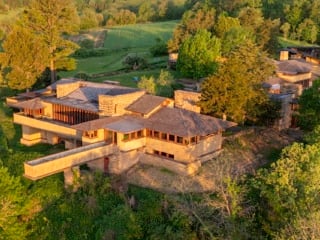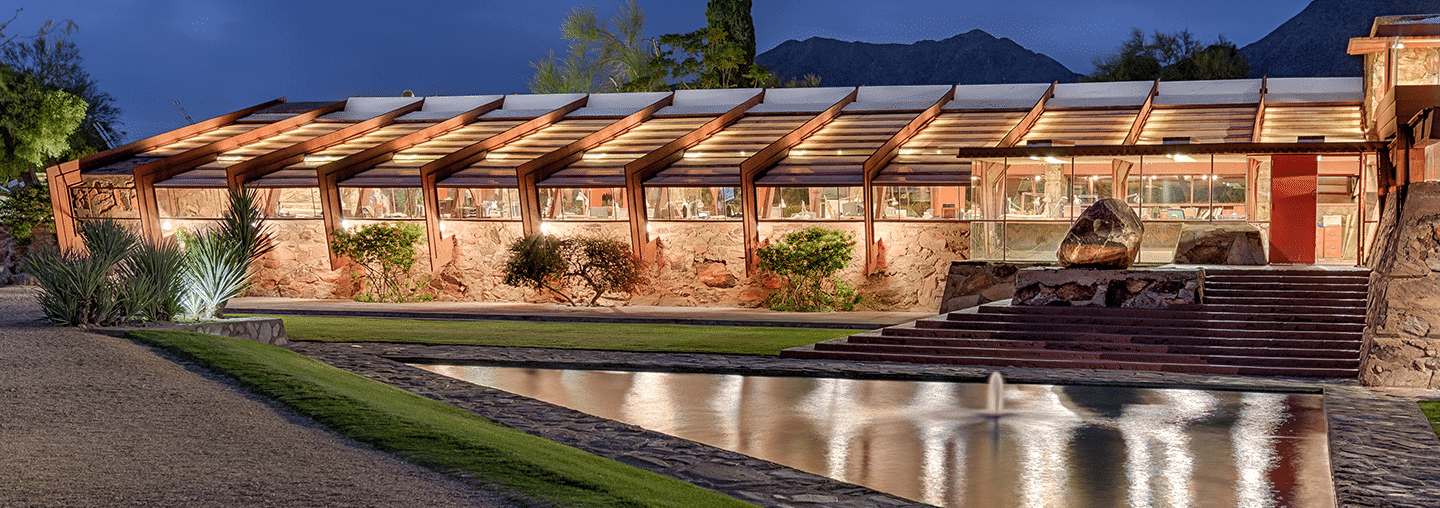
Dramatic Nighttime Photographs of Frank Lloyd Wright’s Desert Laboratory
Frank Lloyd Wright Foundation | Oct 18, 2017
Andrew Pielage’s photography shares the surreal beauty of Taliesin West’s striking structures against a dark desert backdrop.
Photographer Andrew Pielage is on a mission to photograph all of the still-standing Frank Lloyd Wright buildings. So far (as of this post in 2017), he has shot 50 of the historic structures.
The Phoenix-based photographer’s mission has its roots in Wright’s winter home and desert laboratory, Taliesin West. His photos capture the essence of the surrounding Sonoran Desert landscape, the striking way the structure seems to be a natural extension of the desert floor, and the building’s transformation with light and shadow.
Some of the most stunning transformations of the historic space happen after the sun sets. “It’s a special place during the day but takes on a completely different personality at night,” Pielage said.
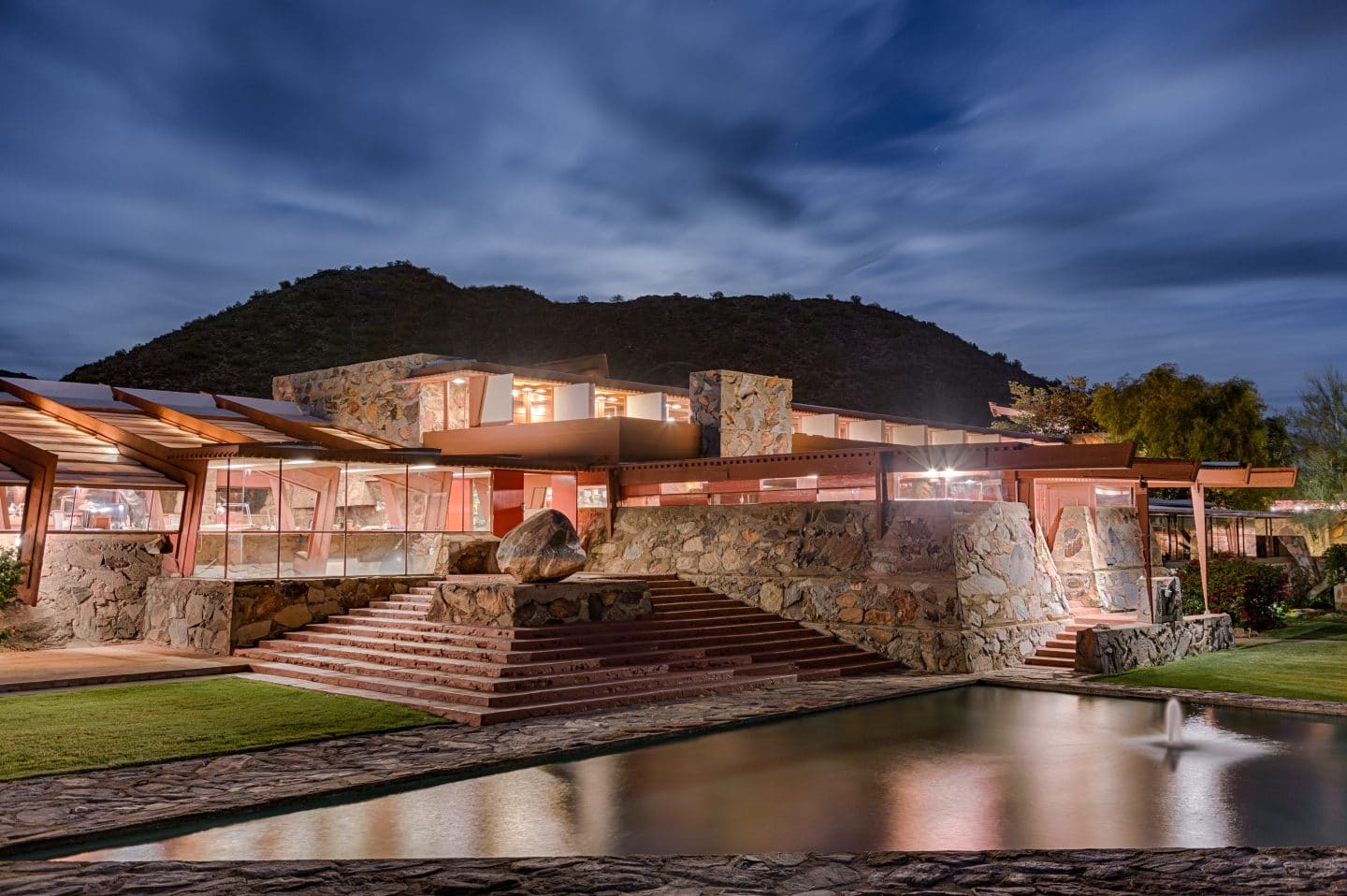
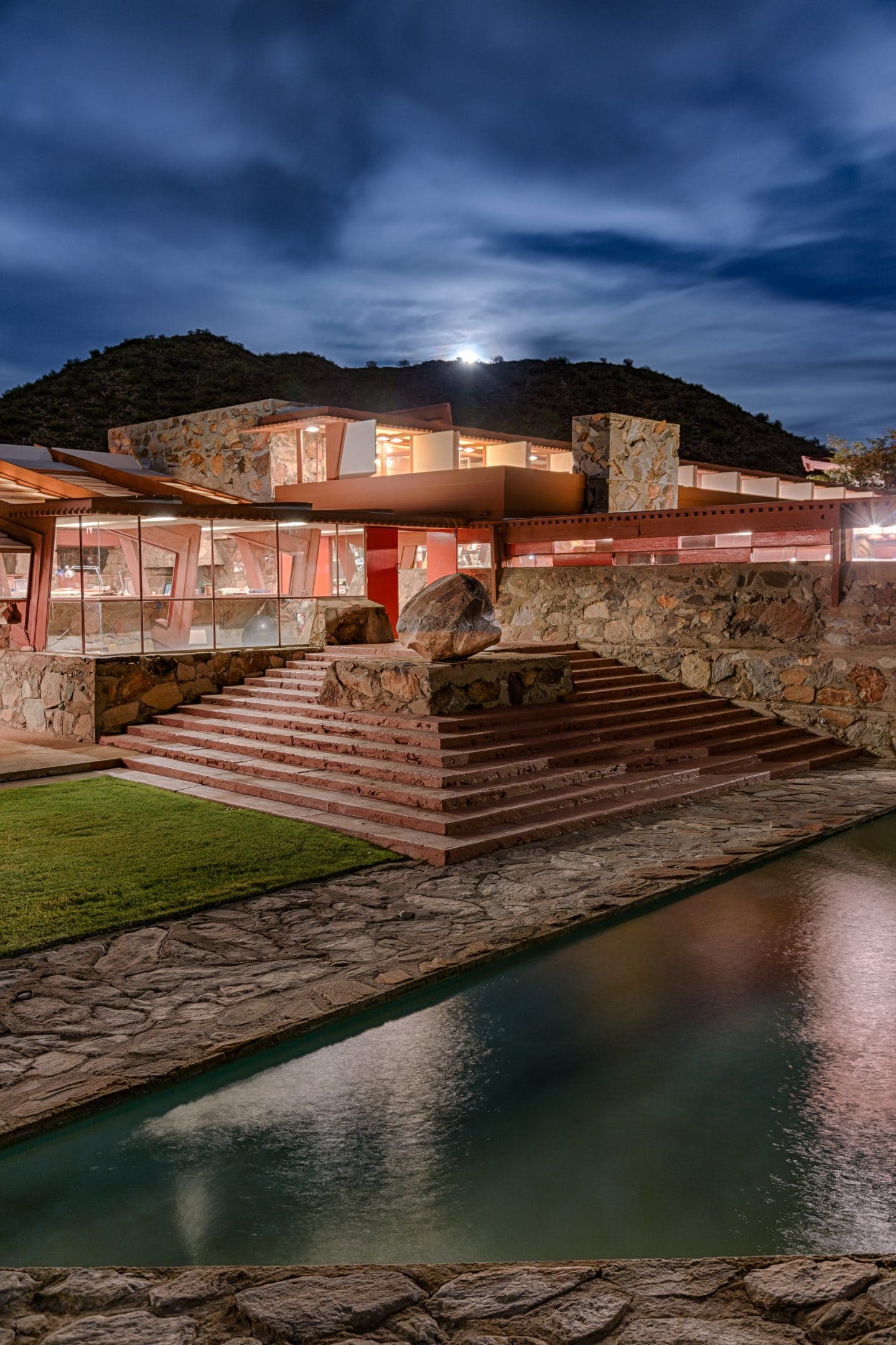
“Growing up in the Southwest, I really got my start in desert landscape photography and a lot of that was done at night under the moon and stars . I particularly enjoy shooting under a full moon. In the golden hours of early morning or late evening, moonlight gives off a very soft and forgiving light.”
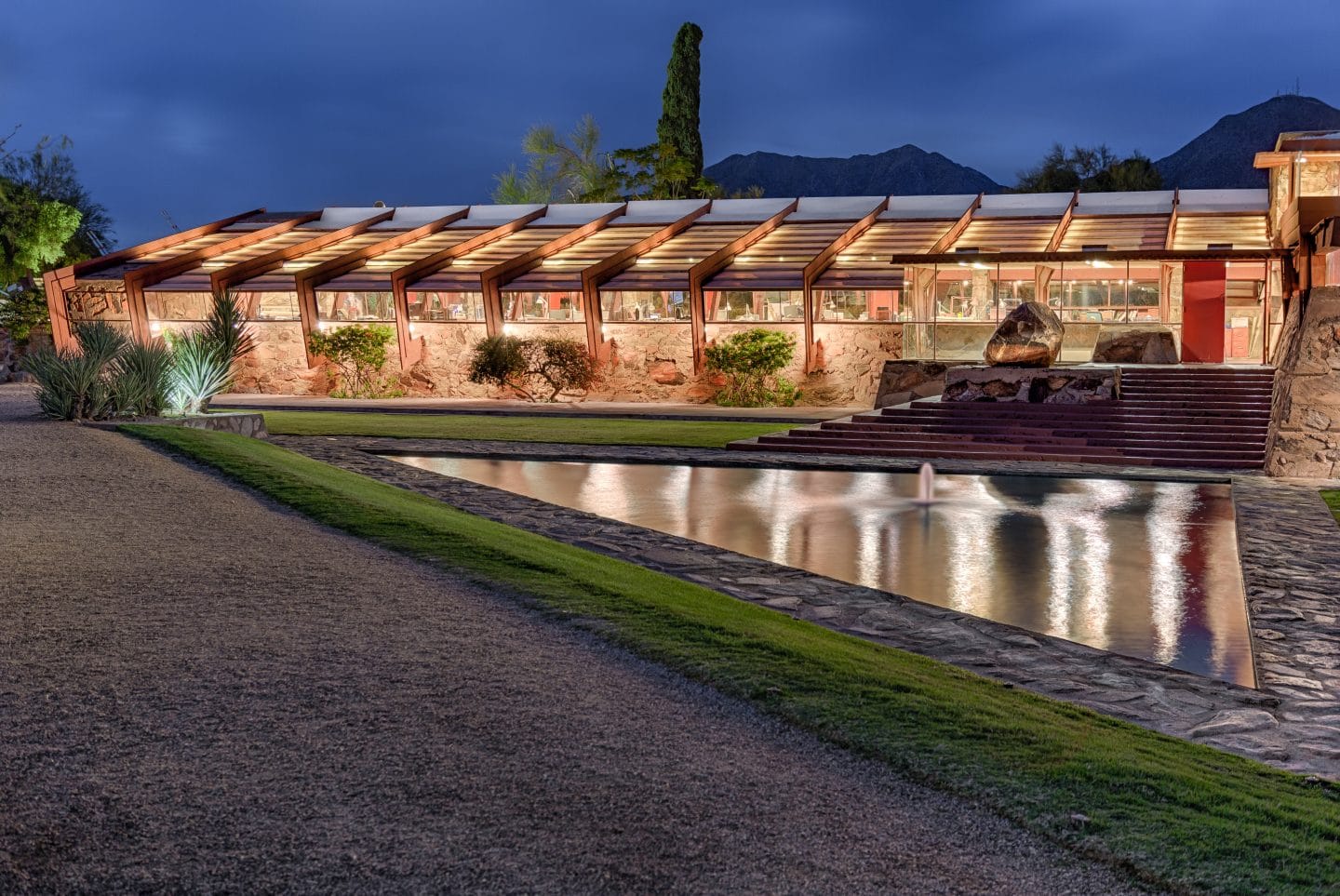
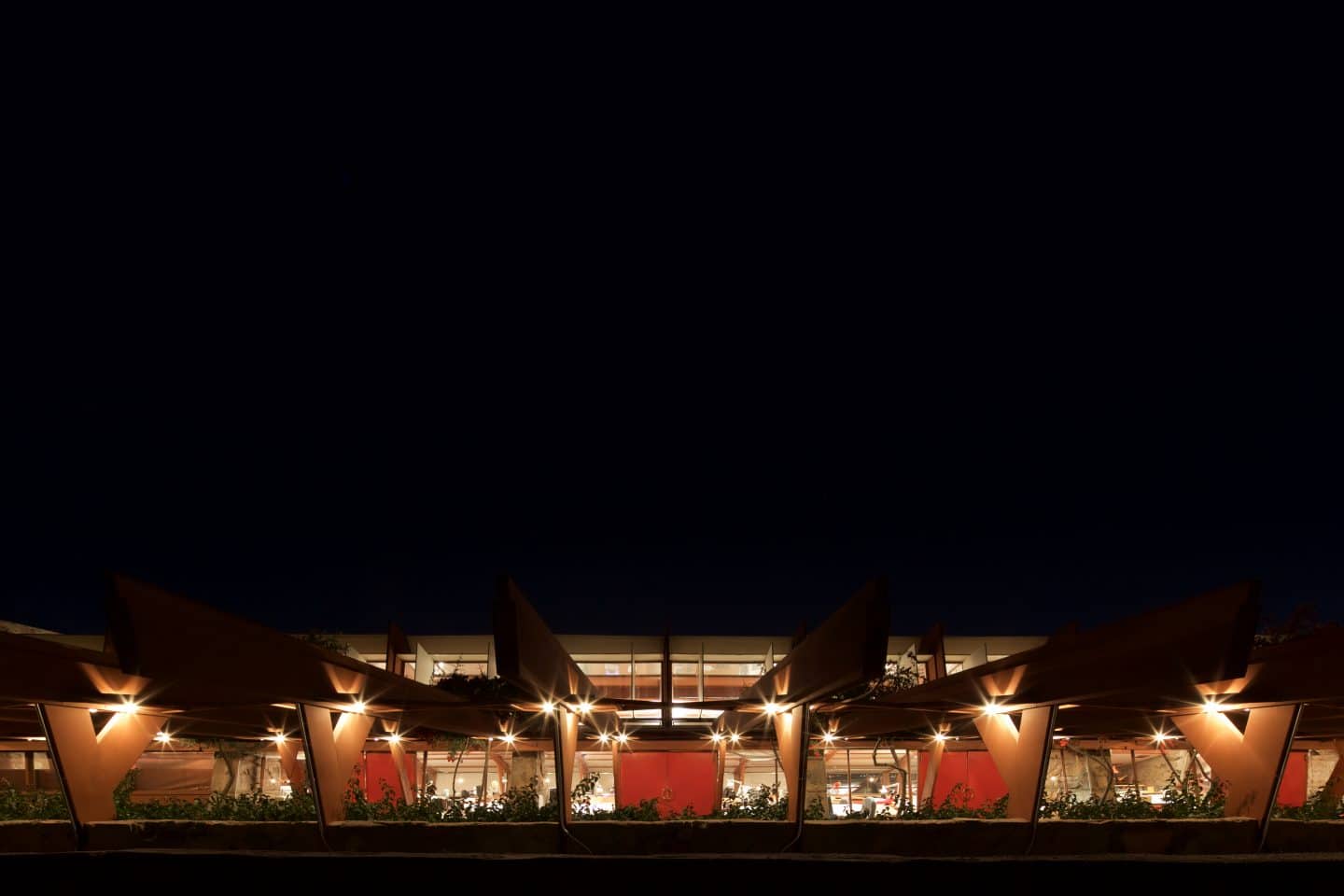
“Shooting with the moon and dark sky leaves you with less distraction in the images. You really get to focus in on the subject of your image whether that be the whole scene or just a part of it.”
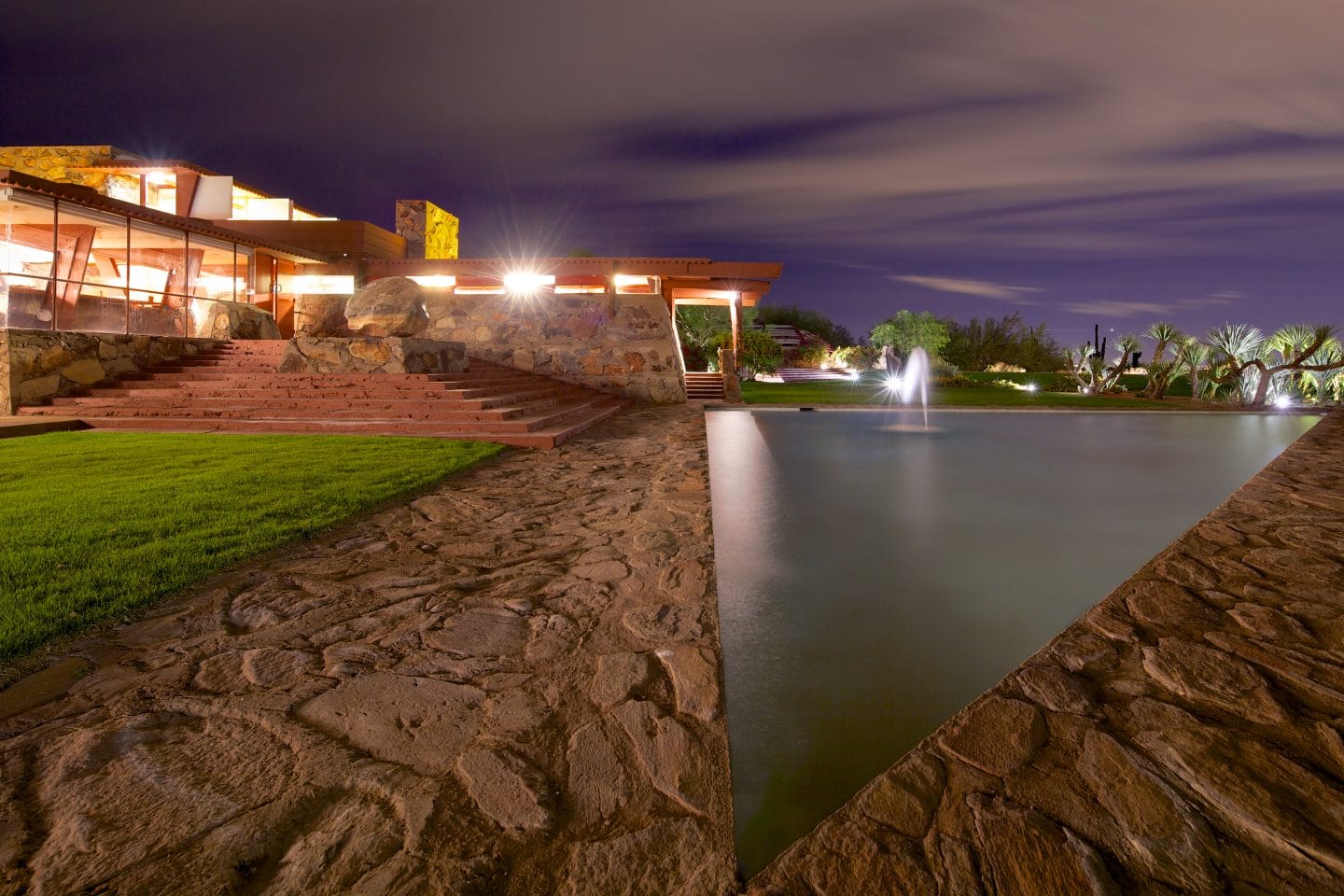

“As in the photos here, the moonlit scenes really bring your eye directly to the building and the beautiful designs in the texture of the desert masonry Taliesin West is known for. Shadows start to move in different directions; add that with the soft glow of the interior lights, and the lines start to really blur between where the desert starts and Wright’s designs begin.”
You can follow Pielage’s photo adventures and even take a photography class with him at Taliesin West.


